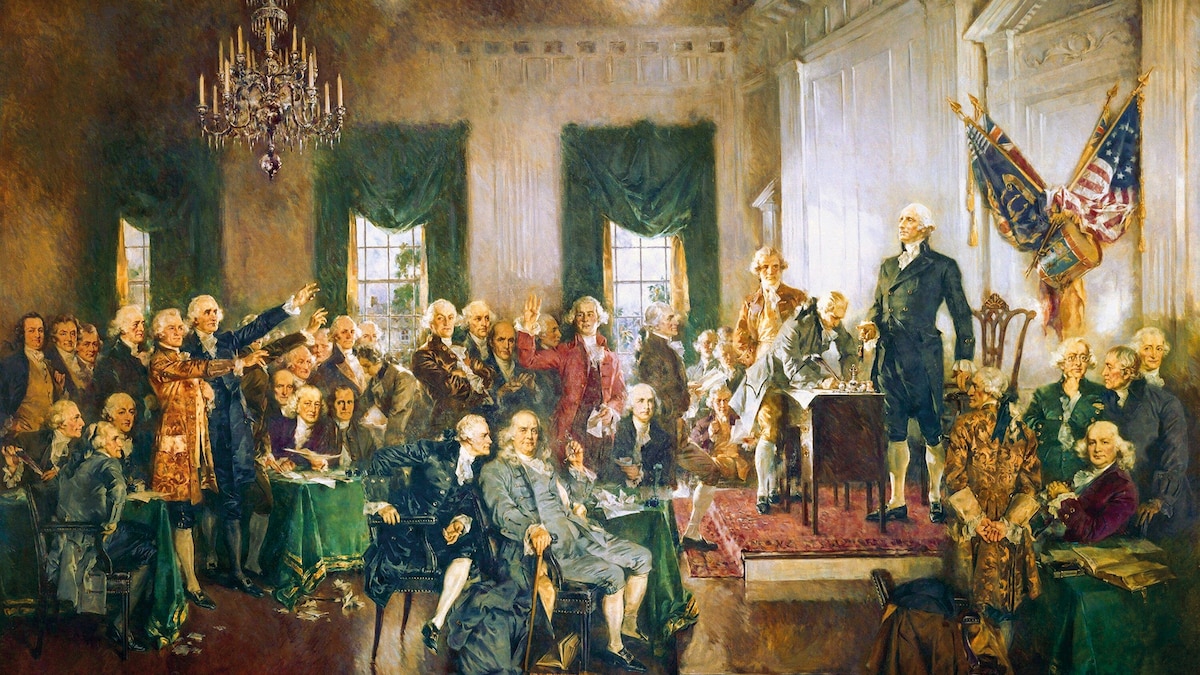Now Reading: The story behind the Great Compromise—the 1787 deal that made the U.S. possible
-
01
The story behind the Great Compromise—the 1787 deal that made the U.S. possible
The story behind the Great Compromise—the 1787 deal that made the U.S. possible

Tempers were fraying in the muggy chambers of Pennsylvania’s statehouse. Excluding Rhode Island, delegates from 12 states had been meeting in Philadelphia for seven weeks to reshape the young country’s Articles of Confederation into a new, more functional national constitution. The convention included some of the nation’s most respected leaders, including Gen. George Washington, 81-year-old Benjamin Franklin, Virginia legislator James Madison, and the young firebrand Alexander Hamilton. Many had served in the Continental Army; all were male, white, and prosperous landowners. Yet by July they were deadlocked over a key issue: how to allot power in the newly formed United States.
(He was a Founding Father. His son sided with the British.)
The argument came down to big states versus small ones. Big states backed the Virginia Plan, drafted by James Madison, which called for the government to be divided into executive, legislative, and judicial branches. The legislature would consist of the Senate and the House of Representatives, both of which would have members proportional to the state’s population.In addition to deciding that states would be represented proportionally, delegates agreed on how people within those states would be counted. This led to the Three-Fifths Compromise; white and other free people would be counted as whole persons, and enslaved Black individuals would be counted as three-fifths of a person for state representation for taxation.

Independence Hall in Philadelphia, where the U.S. Constitution was debated in 1787.
ALAMY/CORDON PRESS
Small states backed the New Jersey Plan, crafted by the state’s former attorney general, William Paterson. Like the Virginia Plan, it gave the government three branches, but the legislature consisted of a single house in which each state had equal representation. This accorded the smaller states power not proportional to their size. As state faced off against state, the convention was in danger of collapsing. A return to the Articles of Confederation would mean, among other things, that the country could not pay off its war debt. The articles created a weak central government that lacked a necessary enforcement power. Additional debates over territory and taxation threatened to divide the nation. It was time for a committee.
(He was the last king of America. Here’s how he lost the colonies.)
Crafting the compromise
On July 3 a small group, led by Connecticut representative Roger Sherman, began meeting to hammer out a solution. Sherman was ideal for this task. Then in his 60s, he was a calm, hardworking businessman, professor, politician, and judge who had already played key roles in drafting the Declaration of Independence and the original Articles of Confederation. John Adams praised his “accurate Judgment, in Cases of Difficulty” and described him as “one of the most sensible men in the world.” Sherman and his committee drafted what came to be known as the Connecticut Compromise, or the Great Compromise. As in the Virginia Plan, representatives would be divided into Senate and House, but with a key difference: Each state would have equal representation in the Senate but proportional representation in the House.
(How the Declaration of Independence wooed Americans away from Britain)

The Articles of Confederation, National Archives, Washington, D.C.
ALAMY/CORDON PRESS
The terms were enough to win by a one-state margin on July 16. Washington wrote to Benjamin Harrison: “I wish the Constitution which is offered had been made more perfect, but I sincerely believe it is the best that could be obtained at this time.”
This story appeared in the July/August 2025 issue of National Geographic History magazine.























